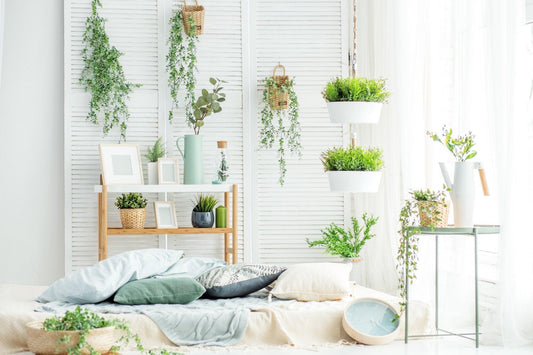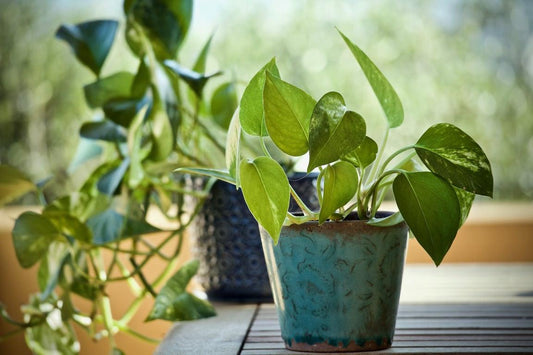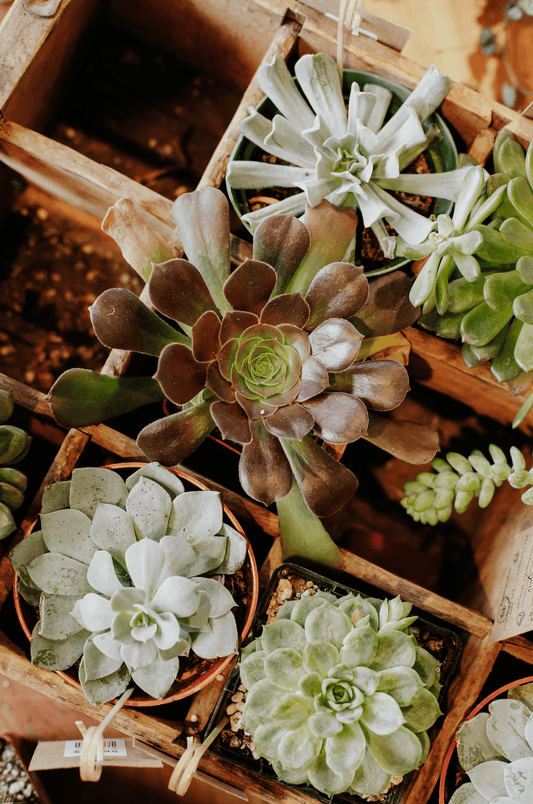Spider Plant
How to Care for the Spider Plant
Overview
Spider plants, also known as airplane plants, are very adaptable, forgiving houseplants, which make them great for beginner plant parents. While the spider plant comes in various shapes and sizes, the most well-loved variety is the variegated spider plant, which have a white stripe down the middle of their long, arching green leaves.
These long, arching leaves give spider plants their name. Not only does the adult plant create the illusion of a spider with a bunch of legs, but the numerous pups, or “spiderettes”, produced from the parent plant look like baby spiders dangling down from a web. These spiderettes will cascade down from the mother plant on long, stiff stems.


Profile
Because of the leaf shape, and the way baby plants are produced, spider plants look amazing in a hanging basket. They look just as good on a table or windowsill, too.
Spider plants are excellent at purifying the air from toxins, making them a healthy addition to your home. Spider plants are non-toxic to people and animals, and may produce a hallucinigenic effect in cats if eaten.




Low light
Spider plants do well in a variety of light conditions, and therefore can be kept in many different spaces. While they can survive in low light, spider plants thrive in bright, indirect light. This filtered light will make the stripes on the variegated variety pop. Don’t put your spider plant in direct sunlight, though, or it’s ;eaves will turn brown and get very crispy.

Occasional
Ideally, spider plants like moist soil, but they are tolerant to drought. Water your spider plant when it is at least 50% dry, but it can go up to 100% dry before being watered. When watering, soak thoroughly and allow the water to flow from the drainage holes, then discard excess water.

Easy breezy
Spider plants should be potted in a pot slightly too big for it. Because of how fast it grows, the roots need room to spread out. If planted in a pot too small for the plant’s growth, it will quickly outgrow it.

Pet Friendly
FREQUENTLY ASKED QUESTIONS (FAQs)
on Spider Plant
How do you propagate a spider plant?
Spider plants are easily propagated. As stated before, spider plants produce a lot of pups or “spiderettes”, which is what gets propagated. These spiderettes cascade down from the parent plant on long, stiff stems; they will look like miniature versions of the parent plant. Simply cut a baby away from the stem and put it in a moist potting mixture or a cup of water to propagate. Roots should begin to grow after 2-4 weeks. Once rooted, spider plants should live in soil, if they aren’t already. You can trim the excess stems away from the parent plant with no harm done to the plant.
Why are my spider plant’s leaf tips brown?
There are a few reasons why your spider plant tips could be turning brown.
The most common reason why the spider plant’s leaf tips are turning brown has to do with the water. Spider plants don’t prefer filtered water for no reason—spider plants don’t like the chemicals and minerals found in tap water. You can tell if water is the culprit if the rest of the plant looks and feels healthy. The brown tips might also feel and look healthy, aside from the color. To fix this problem, you can wait for the plant to dry out then flush the soil with filtered water or rainwater. From then on, you should stick to filtered or rain water.
If the tips of your spider plant are brown and crispy, they might not have enough moisture. Spider plants prefer a more humid environment. You can mist your spider plant a few times a week with a spray bottle to fix this problem, or better yet, get a humidifier for the room.
Why are my spider plant’s leaves curling?
Before anything, make sure that you don’t have a spider plant whose leaves are naturally supposed to be curly. The Bonnie spider plant, a common variety of spider plants, naturally has wild curls.
If you have a regular spider plant and the leaves are curling, your spider plant is probably thirsty. Spider plant leaves are supposed to be long and arching, but too much arching is a problem. Check the soil to confirm the dryness, then water it thoroughly. This kind of curling is usually accompanied by a paler color when underwatered.




